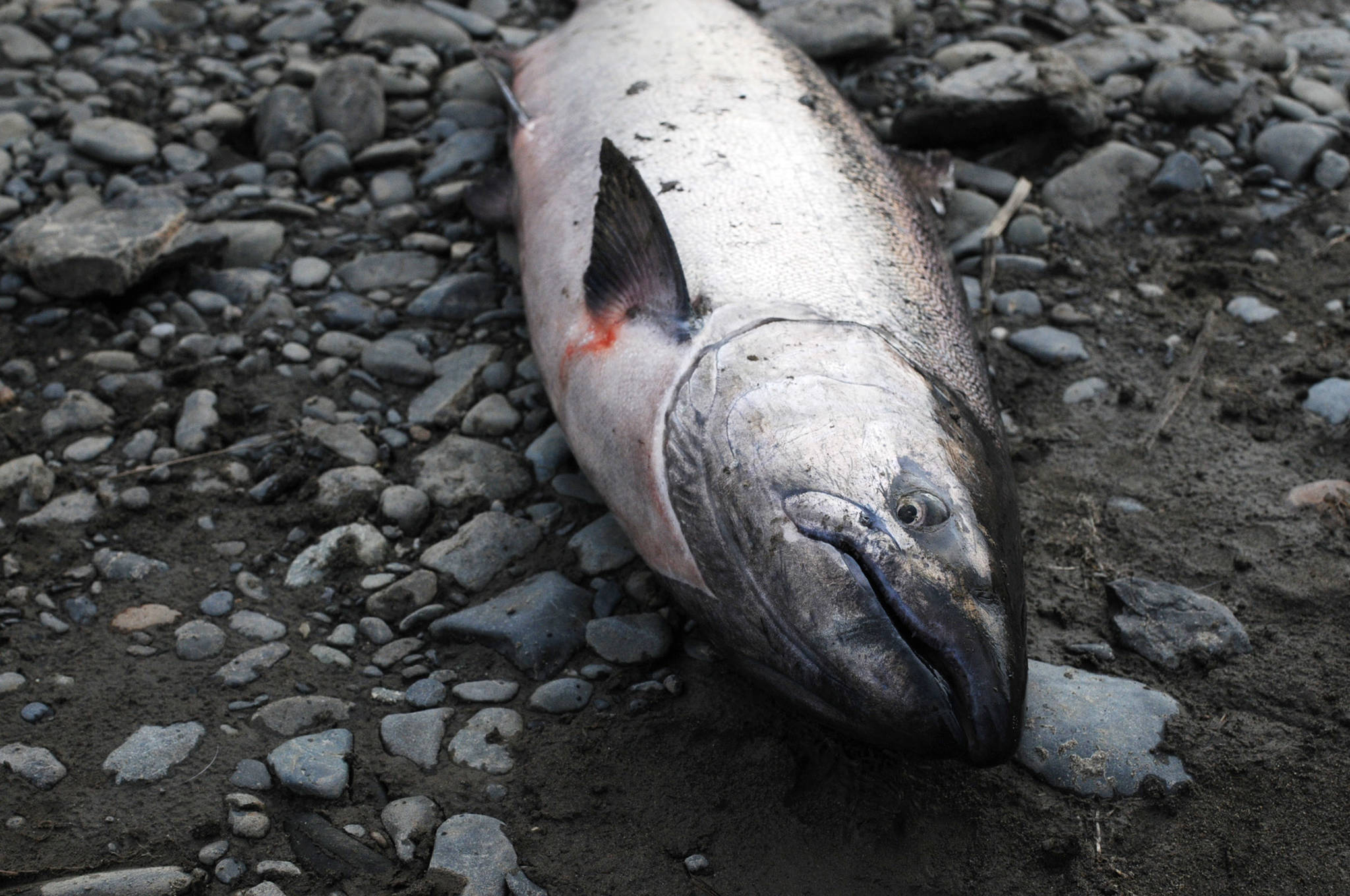With king salmon runs weak so far and fishing season in full swing, barbs are again flying as user groups are restricted.
Though sportfishermen are now able to fish for kings on the Kenai and Kasilof rivers, they’re restricted to no bait on the Kenai River and can only fish between the confluence of Slikok Creek with the Kenai and the mouth. Everything upstream is closed. The Anchor and Ninilchik rivers and Deep Creek as well as a section of the marine waters out to a mile offshore are still closed to king fishing, too, because of poor returns to those rivers this season.
Upper Cook Inlet commercial fishermen have had a handful of openings so far. As of Monday, commercial fishermen had harvested 130,993 salmon, 914 of which were kings and 118,868 of which were sockeye, according to the Alaska Department of Fish and Game’s commercial fisheries harvest summary.
However, some are unhappy with Fish and Game’s decision to open the commercial drift gillnet fleet and the set gillnet fishermen in the Kasilof section for fishing on June 30 while sportfishermen were restricted from fishing for kings on the Kenai and restricted to no bait on the Kasilof River. The Kenai River Professional Guide Association, a trade association representing sportfishing guides on the Kenai River, sent a letter Saturday to Gov. Bill Walker and local commercial fishery managers to express frustration with the decision.
“There are no numbers of significant sockeye salmon in any of the systems,” wrote Ray DeBardelaben, the president of the association, in the letter. “How the Department can fathom fishing regular openings is unacceptable, let alone an emergency opening? To issue an emergency opening is beyond belief!”
He added that the guide association “continues to lose faith in the integrity of ADFG” to make decisions on Cook Inlet salmon management and that the association is “looking forward to a new direction in November.”
Under normal management, commercial fishermen in Cook Inlet have two regularly scheduled openings on Monday and Thursday each week. Based on salmon escapement, managers can choose to issue additional openings. Commercial fishery managers opened the fishery from 7 a.m–9 p.m. Saturday to harvest sockeye returning to the Kasilof River, according to the emergency order.
Sockeye salmon runs have been weak so far across the Gulf of Alaska, with poor returns in the Copper River, Yakutat and Kodiak. Since Fish and Game began counting sockeye on the Kasilof River June 15, 60, 876 sockeye have passed the sonar.
The setnetters in the Upper Subdistrict section have not opened yet. When the sportfishery on the Kenai River is restricted to no bait, the setnetters do not get their regular Monday and Thursday periods starting July 1 — their openings are issued by emergency order only, with no more than 48 hours of fishing per week. The East Forelands are excluded from these restrictions, according to an emergency order issued by Fish and Game on June 22. These restrictions don’t affect the Kasilof section setnetters or drift fleet.
So far, 598 late-run king salmon have passed the sonar on the Kenai River, compared to 820 on the same date in 2017. Before the late run began July 1, Fish and Game restricted fishing for kings upstream of Slikok Creek, but for some in the sportfishery, that’s not far enough. The Kenai River Sportfishing Association’s board of directors passed a resolution June 29 asking for Fish and Game to restrict late-run kings to catch and release only in the sportfishery, which would in turn restrict setnetters to no more than 24 hours of fishing per week.
Fish and Game is also restricting the retention of any king salmon in the personal-use dipnet fishery on the Kenai River, which opens July 10. When bait is prohibited on the Kenai River sportfishery, dipnetters aren’t allowed to keep kings. According to a news release issued Thursday.
“The 2018 king salmon runs throughout Cook Inlet have consistently and significantly underperformed ADF&G preseason forecasts resulting in restrictions and closures of inriver and marine sport fisheries,” the release states. “(Fish and Game) will continue to monitor the Kenai River run as it develops and additional actions may be taken depending on the run strength.”
Reach Elizabeth Earl at eearl@peninsulaclarion.com.

